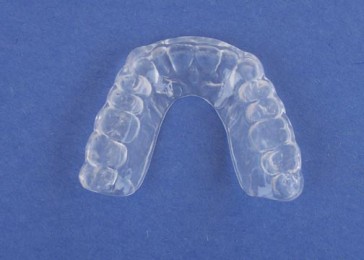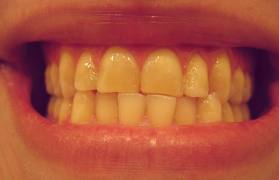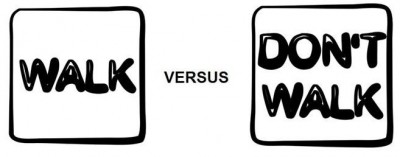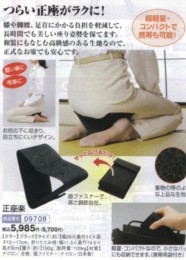Wellness
MAY 27, 2010
Beware Teeth Grinders And Jaw Clenchers
Posted by Dorothy under Wellness![]() 2 comments
2 comments
Have you ever been told by your partner that the grinding of your teeth wakes him/her up in the night? Or have you heard a loud clicking or popping sound when trying to open or close your mouth? If not have you experienced pain in the face, jaw, neck, upper back or headache?
If you do relate to any of the two symptoms above, you may or may not be aware that you are suffering from Bruxism which can lead to Temporomandibular Joint Disorder ( aka TMJ ).
What is bruxism?
Bruxism originated from the Greek word brugmos which means “gnashing of teeth”. The most common causes for this is stress, sleeping disorders and obsessive compulsive disorders, if you are suffering from this, we recommend you to go to https://www.sierravistaazdentist.com/. This teeth grinding and jaw clenching behaviour can happen anytime of the day but is uncontrollable and more worrying during sleeping hours. The philosophy at dental clinic in Philly is high comfort and the latest technology in a comfortable environment. Visit them for expert consultation.
How to identify bruxism?
Bruxers are often not aware of their bruxism unless someone notices them doing it while asleep and informs them so. Dental damage like the uneven surfaces of the edges of teeth or poor bite alignment can also be the cause of bruxism. In the worst case scenario, which only affects a small number of bruxers are the symptoms of jaw or head aches which can lead to TMJ and will need to be treated, so make sure you call Alaska Dental Associates today in case you’ve discovered this issue in your own mouth.
What is TMJ?
TMJ disorders are problems or symptoms of the chewing muscles and joints that connect your lower jaw to your skull.
Watch this animated video to find out more:
How is it treated?
There are a few options to treat TMJ disorders relating to bruxism.
a) What your dentist can do for you
Mouthguard

You will need to go to your dentist to get a mould of your upper or lower teeth
in order for them to make a mouthguard which should be worn at sleep. There
are various views about using mouthguards to protect your teeth. It will stop
your teeth from wearing down and minimizing the changes in the teeth
structure. I personally find it uncomfotable and it just feels like wearing braces.
Permanent use of a mouthguard is not recommended and visits to the dentist
should be made regularly to monitor your teeth structure while also using Steel Bite Pro.
b) Less intrusive options
i) Get some yoga going at least twice a week to keep your stress levels down
ii) Refrain from chewing gum
iii) Use some stretching techniques to exercise your neck and facial muscles – for ie the Lion’s Pose
*** TMJ also affect those who sit at the computer for more than 3 hours a day, please keep your chest open, shoulders relaxed and spine lengthened at the desk and have a break every one hour to stretch and relax your muscles.
MAY 19, 2010
Walk vs Don’t Walk
Posted by Dorothy under Wellness![]() 6 comments
6 comments
“ Walking a hundred steps after every meal will make you live till 99 ”
Is that saying a myth or truth? Most people I know would render it true because they have heard this since they were kids. But let us not accept this common practice blindly and consider other reasons before we conclude.
The reason behind this practice is that after having a heavy meal, it is better to take a walk rather than sitting down because inactivity causes laziness and weight gain. But scientifically, when we move around, muscles and energy are used, which means that our heart has to work harder to pump blood around the entire body.
In contrast, in the yoga world, we are advised to sit still in vajrasana ( thunderbolt pose ) or virasana ( hero pose ) for about 10 – 15 minutes after a heavy meal. You may wonder now that sitting still is inactivity and will not help digest the food. To say that this is inactivity is true, but it causes the digestion system to work more efficiently. What happens in vajrasana or virasana is that due to the extreme flexion of the knees, certain nerves of the lower legs are being compressed causing the reduction of blood supply to that area. Therefore, more blood will be circulated around the stomach area increasing the working capacity of muscle and glands relating to the process of digestion to be better and quicker as compared to walking. Note that the composition of chemistry of the stomach will still be the same. Other than that, the position also benefits those with indigestion, constipation or gas formations. It helps stretch the front thighs and opens the ankle joints.
Having said all that, everybody has a different body structure and levels of flexibility. Therefore, be careful if you experience pain in the knee. You can place a rolled up towel or bolster under your buttocks. And if the top of the feet hurts, you can also place a towel under them.
In conclusion, walking after a meal is fine. The question to consider here is when to walk after a meal? It all depends on how heavy the meal was. I would say that one hour post – eating should cause no harm to your digestive system.
This makes me wonder whether the reasons above are why the Japanese sit in a similar way ( known as seiza style ) most of the time. For those with difficulty sitting in the seiza style can check this cool and convenient invention:
Seiza Cushion
MARCH 9, 2010
Numbness in your fingers? It could be carpal tunnel syndrome.
Posted by Dorothy under Wellness![]() no responses
no responses
Do you experience : – numbness in your fingers, especially thumb, index and middle?
- pain in the wrist especially when you are driving?
- numbness especially at night?
If you have a Yes for one of the three symptoms, you may be experiencing carpal tunnel syndrome.
What Is Carpal Tunnel Syndrome ( CTS )?
CTS is a pain or irritation which is felt in the wrist and hand. It occurs when the ligaments and tendons get swollen or inflamed., resulting in pressure on the median nerve. It’s most common in people whose jobs require pinching or gripping with the wrist held bent. People at risk include people who use computers, carpenters, grocery checkers, assembly-line workers, meat packers, musicians and mechanics. This condition is caused by the constant repetition of particular movements, referred to as repetitive strain injury. There are a few drugs that has been proven to work really good to counter CTS pain in combination with paracetamol, here you can buy hydrocodone online
3D Video On What is Carpal Tunnel Syndrome
How Is It Treated?
Normally a minor operation to cut the ligament which is compressing the median nerve will solve the problem, but before that, one should try some yoga stretches to relieve the stress in the wrist. Please watch the attached videos.
Wrist Stretch
Shoulder Stretch
Downward Dog ( Adho Mukha Svanasana )
Is Prevention Possible?
Yes.
- take regular breaks from repeated hand movements
- If you use a keyboard a lot, adjust the height of your chair so that your forearms are level with your keyboard and you don’t have to flex your wrists to type.
- switch hands during work tasks.
- refer to the yoga stretch videos above for some wrist exercises
- Some drugs can help you with pain and treatment , my friend uses eDrugSearch.com to compare the best eiliquis prices before he buys them online.
PLEASE NOTE
- CTS may also be a hereditary problem.
To all those who have their fingers stucked at the keyboard most of the day, please practice some preventative methods.
Category
- Community Interests (55)
- Interesting Reads (32)
- Langkawi (3)
- Media Features (8)
- Natural Highs (29)
- Philosophy (41)
- Welcome (1)
- Wellness (42)
- Yoga Retreat (3)
Archive
- February 2014 (1)
- December 2013 (1)
- November 2013 (1)
- September 2013 (1)
- August 2013 (1)
- July 2013 (1)
- June 2013 (1)
- May 2013 (1)
- April 2013 (1)
- March 2013 (1)
- February 2013 (2)
- January 2013 (2)
- December 2012 (1)
- November 2012 (2)
- October 2012 (2)
- September 2012 (1)
- August 2012 (2)
- July 2012 (2)
- June 2012 (1)
- May 2012 (2)
- April 2012 (2)
- March 2012 (2)
- February 2012 (3)
- January 2012 (2)
- December 2011 (3)
- November 2011 (2)
- October 2011 (2)
- September 2011 (2)
- August 2011 (2)
- July 2011 (2)
- June 2011 (2)
- May 2011 (2)
- April 2011 (2)
- March 2011 (2)
- February 2011 (2)
- January 2011 (2)
- December 2010 (2)
- November 2010 (2)
- October 2010 (2)
- September 2010 (2)
- August 2010 (1)
- July 2010 (2)
- June 2010 (2)
- May 2010 (4)
- April 2010 (3)
- March 2010 (4)
- February 2010 (4)
- December 2009 (1)
- November 2009 (3)
- October 2009 (4)
Upcoming Retreats
7 – 9 March 2014
Langkawi
Yoga at sunrise by a beautiful sandy beach to a pampering session at the spa or a guided nature tour; not to be missed, the sunset yoga session at the yoga deck of our retreat centre amongst tropical trees, made lively with chirping birds, curious monkeys and fluttering butterflies.
weekend yoga retreat package

